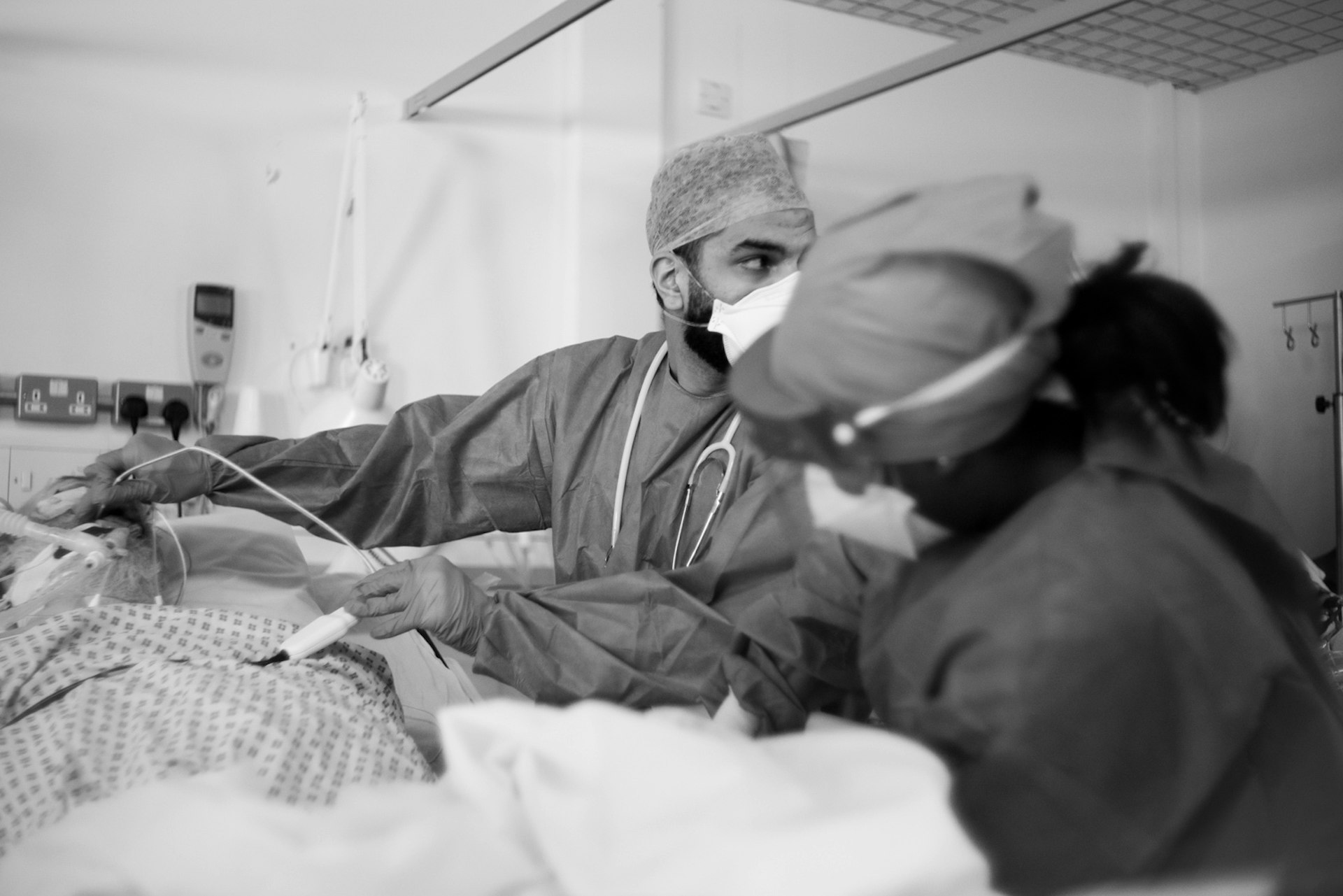
Inside an NHS hospital at breaking point
- Text by Ben Smoke
- Photography by Gus Palmer
Dr. Susan Jain is standing in the nurses’ station in the Intensive Care Unit (ICU) at Homerton Hospital, east London. “When patients see me approaching you can see a look of terror.”
It’s not hard to see why. You can barely make out any of her facial features, beyond the gold eyeshadow on her eyelids. Her voice is muffled by the medical mask she wears around her nose and mouth, dampened even further by the perspex face shield that sits atop her head. “These things,” she continues, motioning to the PPE, “they really take the humanity out of my job.”
It’s February and the pandemic is entering its eleventh month in the UK. It’s warm in the ward, under layers of PPE, but through the narrow windows that line the wall above the beds, you can see the snow falling outside. It’s quiet, almost peaceful, but for the intermittent beeps and alarms of machines and the muffled conversation of medical staff swarming around each bed, changing dressings, cleaning, flipping patients over.
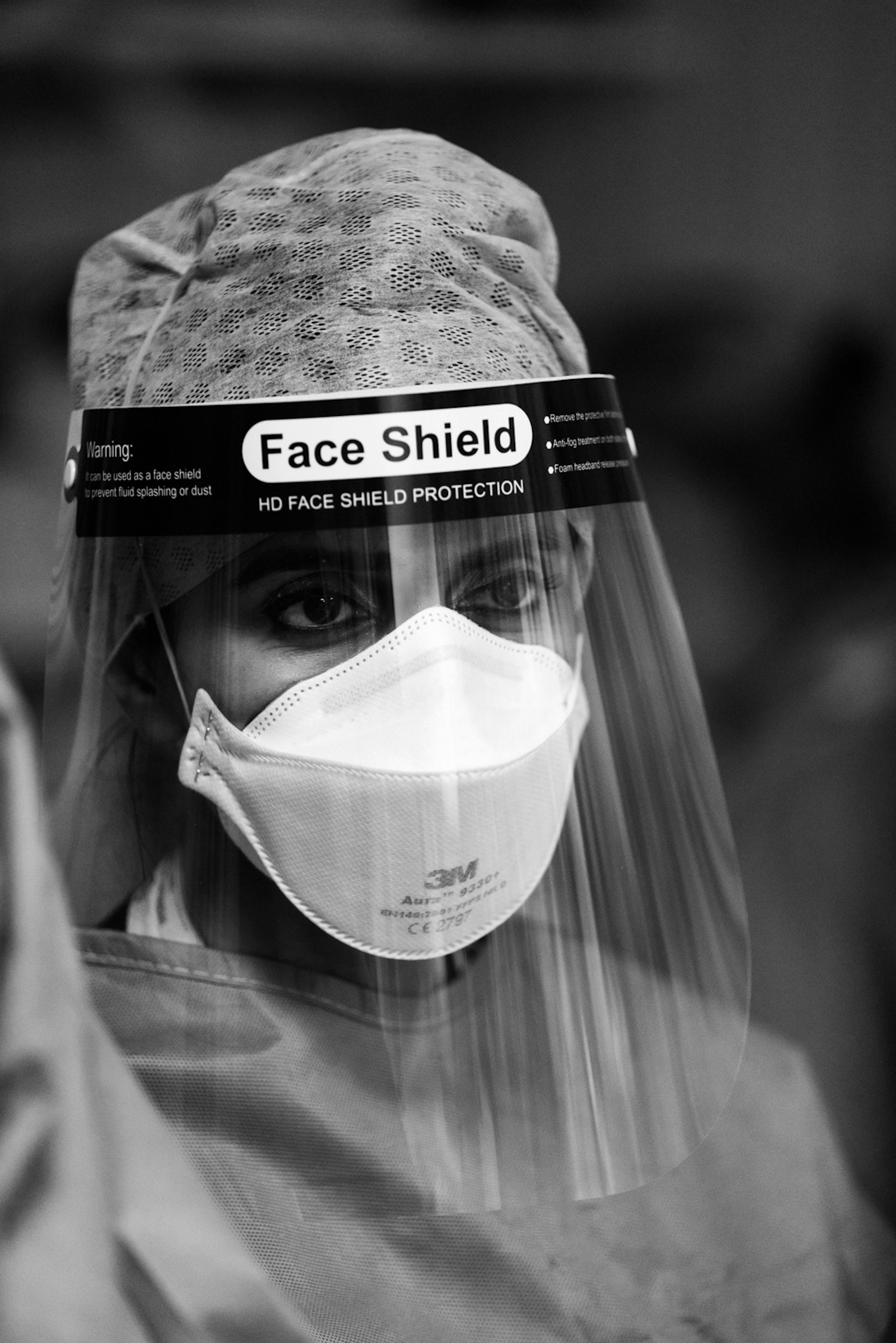
Dr. Susan Jain on a Ward Round in the ICU
The ICU is populated by ‘Covid potential’ patients: people who’ve come in from the community with ailments not associated with the disease, but who could potentially be infected with it. Patient numbers on this ward are “almost back to normal,” Susan says wearily. There are four occupied beds currently but, looking around, normal is far from how one might describe the scene.
In buildings like Homerton across the country, tens of thousands of people work every day to keep people alive; to fight against coronavirus. On the outside, things look like they are beginning to turn a corner: infection rates are dropping daily and the vaccination programme is advancing at speed. But here, inside, the horror continues unabated. The idea of prematurely relaxing lockdown measures is immediately met with alarm from everyone you ask. They plead for people to stay at home. To help get rates down. As gruelling and relentless as this pandemic has been for everyone, you can’t help but wonder what the long-term impact will be on those who have been on the frontlines.
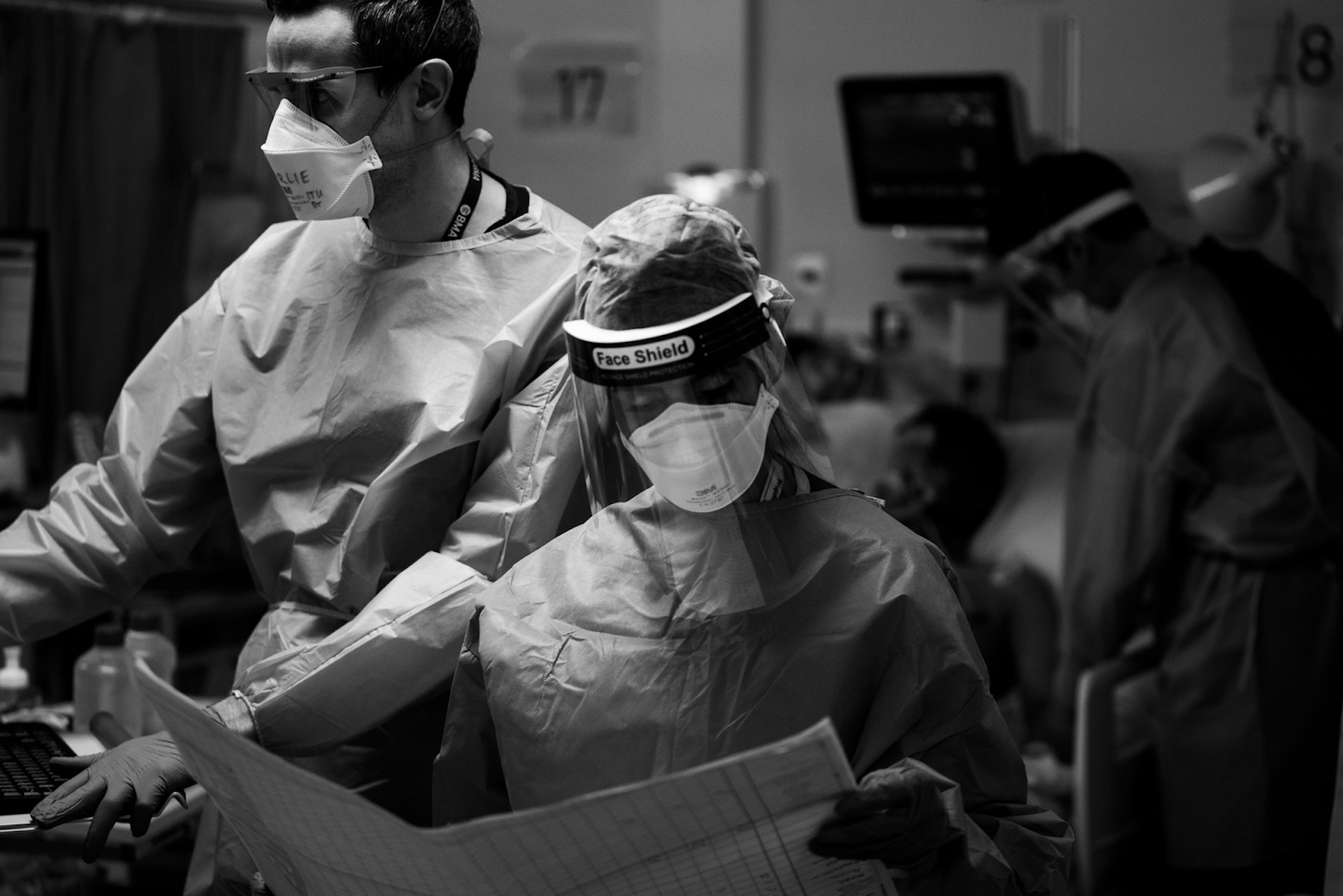
Dr. Susan Jain on a Ward Round in the ICU
In the ICU, huge screens have been erected at the end of each bed, shielding the nurses’ station and walkway from those in the beds. Everyone working on the ward wears FPP3 (high-grade face filtering) masks that dig into your skin, crush your nose and pull on the base of your skull: they make your head and face ache, your throat becomes dry. The layers of gowns, scrubs, gloves and visors create a physical boundary between the medical staff and patients.
Susan moves between beds, calmly listening to updates from other doctors. In one bed, a woman lies unconscious. Next to her is a window into a small side room: the glass has been almost covered with pictures of her with children and family members. The photos have been sent in and put up by the staff. There are no visitors allowed here, except in the case of end-of-life, so people in the beds lie alone, unable to see the faces of anyone but neighbouring patients.
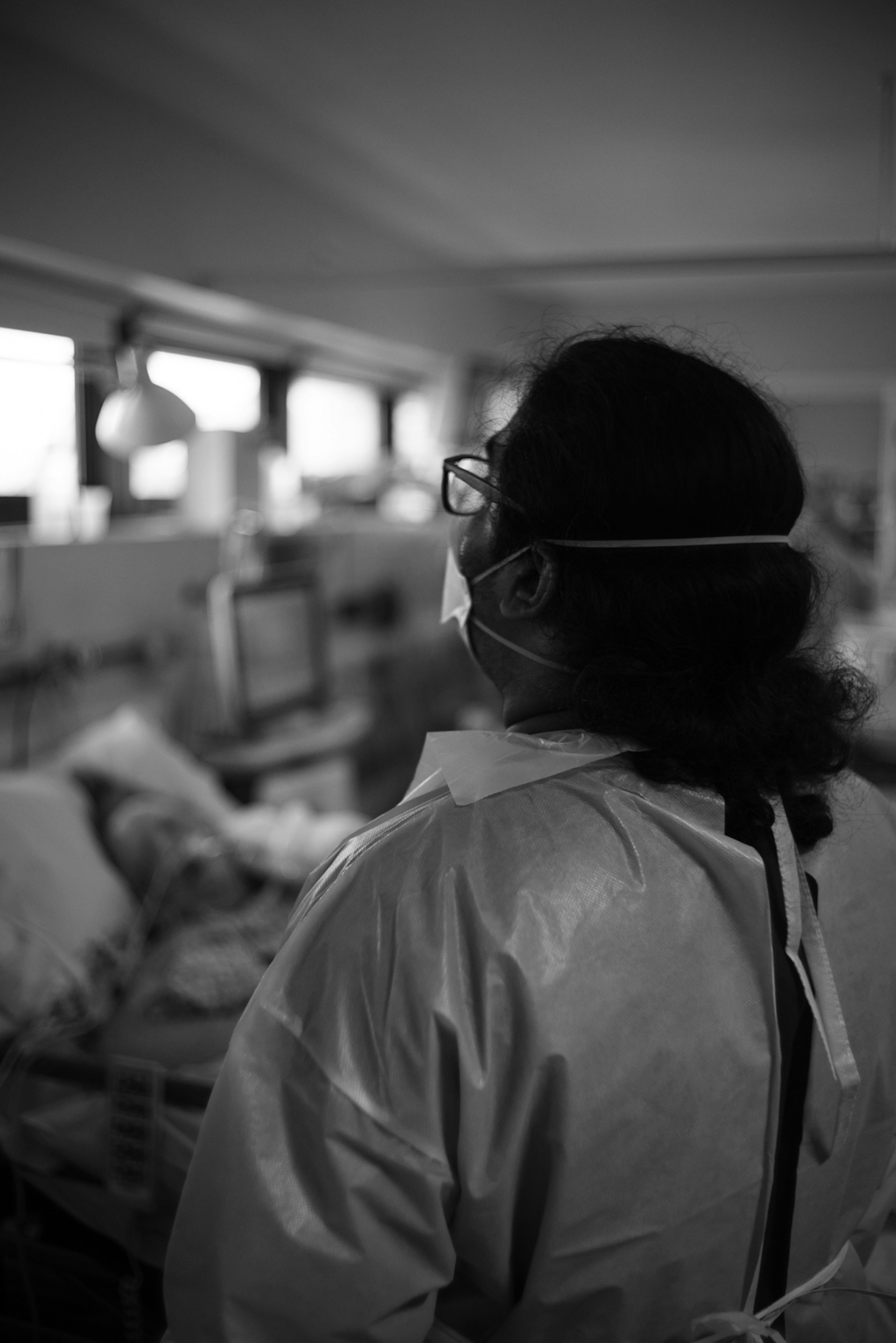
A medical professional working inside the ICU calls through to book a scan for a pregnant patient who has tested positive for Covid-19
It’s hard to wrestle with the fact that the last time many will see the full faces of their loved ones will be in pictures. “Everyone of these people has a life,” Susan says, gesturing to the photos. “They have people who love them. They are important to someone. They have been doing stuff. It never fails to make me feel emotional.”
Across the hall is the ‘overflow’, filled to capacity with Covid-positive patients. Switching between wards means changing out of and back into a different set of PPE. The mask and face shield stay in place, but the gowns and gloves that go over your scrubs are ripped off and thrown in the bin at a ‘donning station’, replaced by a new set on the next ward.
It’s much more hectic here, with medical staff running around between beds filled with patients on ventilators. You can almost feel the fatigue in the air. There are three bays, each with four or five beds. The bays are numbered, indicated by a piece of paper taped to a rail. Equipment is piled up in every available nook and cranny. “This used to be the surgery waiting room,” says Susan. The ward, along with many others in the hospital, was hastily converted when the pandemic hit.
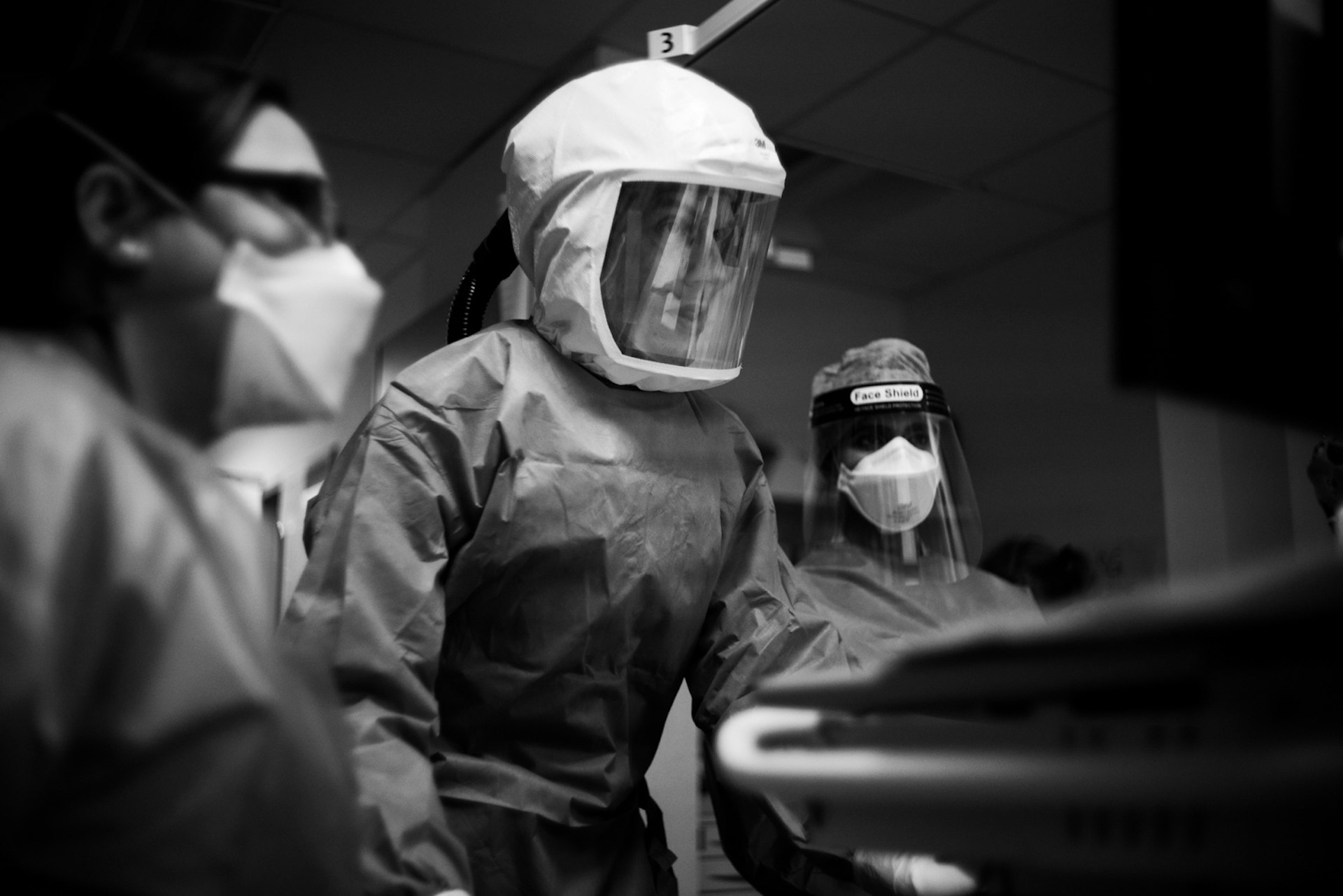
Dr. Susan Jain on a Ward Round in the ICU
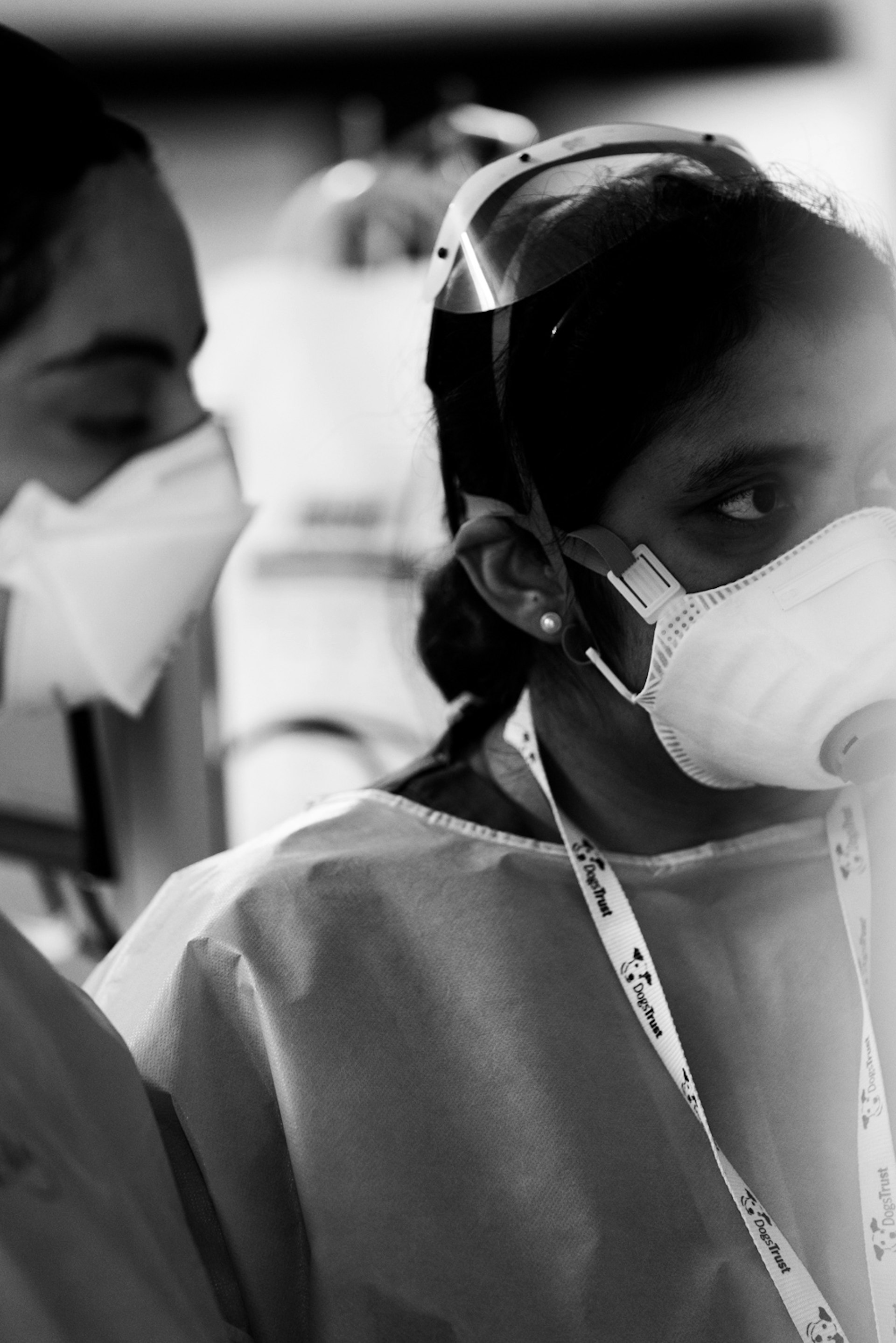
Medical professionals at patient’s bedside in the ICU
The hospital, which serves the borough of Hackney, has just under 500 beds and was at breaking point even before the second wave. In the period of 2 December to 1 March 2020 the ICU had an occupancy rate of 99.6 per cent: there were just four days in the entire quarter in which the unit was not at full capacity. At points during the second wave, there were over 200 Covid patients across the hospital site. The toll that it’s taken on staff and site is painted on the faces of everyone you meet.
“It felt like a lot of people who avoided it [Covid-19] in the first wave came down with it in the second wave,” Susan explains. “We were short-staffed in the second wave in terms of nurses. In the first wave we used a lot of agency nurses but we didn’t see many of them return this time round – one can only think it’s because they were exhausted and knackered.”
As the second wave hit, staff found themselves once again faced with the unrelenting carnage of the disease. Speaking at the time, a nurse who wished to remain anonymous told me, “My annual leave has been cancelled and I’ve been ordered back to work from [January 4]. It’s terrible there.” A healthcare assistant working at Homerton Hospital over Christmas said, “Patients die, I prepare the body and within minutes, there is another patient dropped off by A&E to take the bed. It’s relentless.”
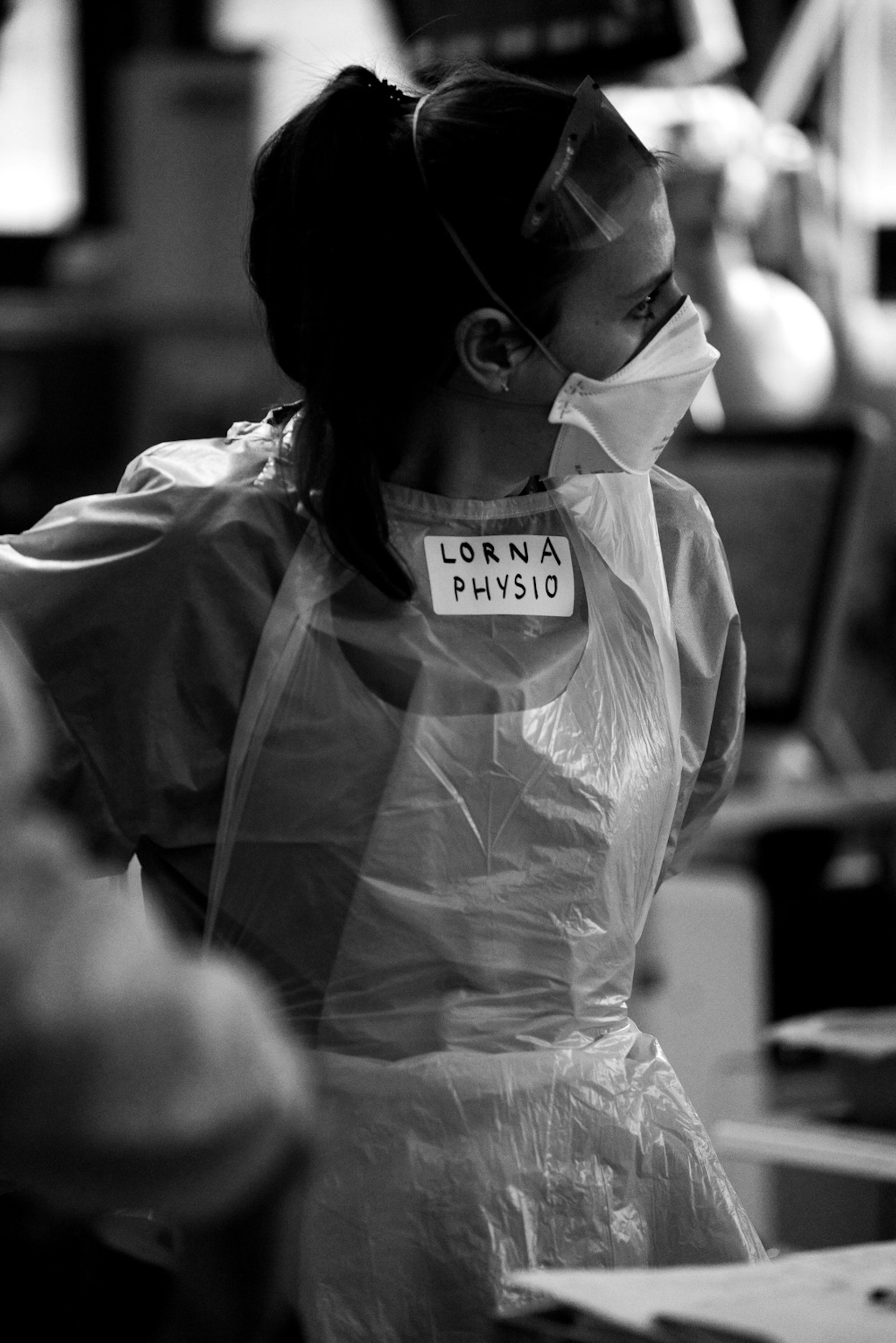
Lorna, a physio puts on an apron before tending to a patient in the ICU
There’s constant movement in the overflow ICU. The sounds of rustling scrubs and muffled consultations are peppered with the puff of the ventilators pushing air into the lungs of almost every patient on the ward, many of whom are motionless. Doctors huddle around the beds, asking nurses about ‘crackle’ and ‘wheeze’ in the chest of the patients. Someone shouts ‘X-ray’ and the bay is cleared as a portable X-ray machine captures a picture of a patient’s beaten lungs. Outside, the snow is still falling, and from this vantage point it’s possible to see the tops of the houses and church spires of adjacent Hackney. “By the time people get to the intensive care unit, their chances of survival have diminished quite a lot,” Susan says. “We’ve been seeing a mortality rate of over 50 per cent.”
On the other side of the ward, an intubated patient, a man in his 60s, lies unconscious in bed. Lucy Dale, a member of the communications team at the hospital, crouches down by his side, playing voice messages from his family to him. “Today we had snow,” one begins. Pictures of his family stuck to the wall by his bedside look down on him. “You are working so hard to get better, we can’t wait to see you.”
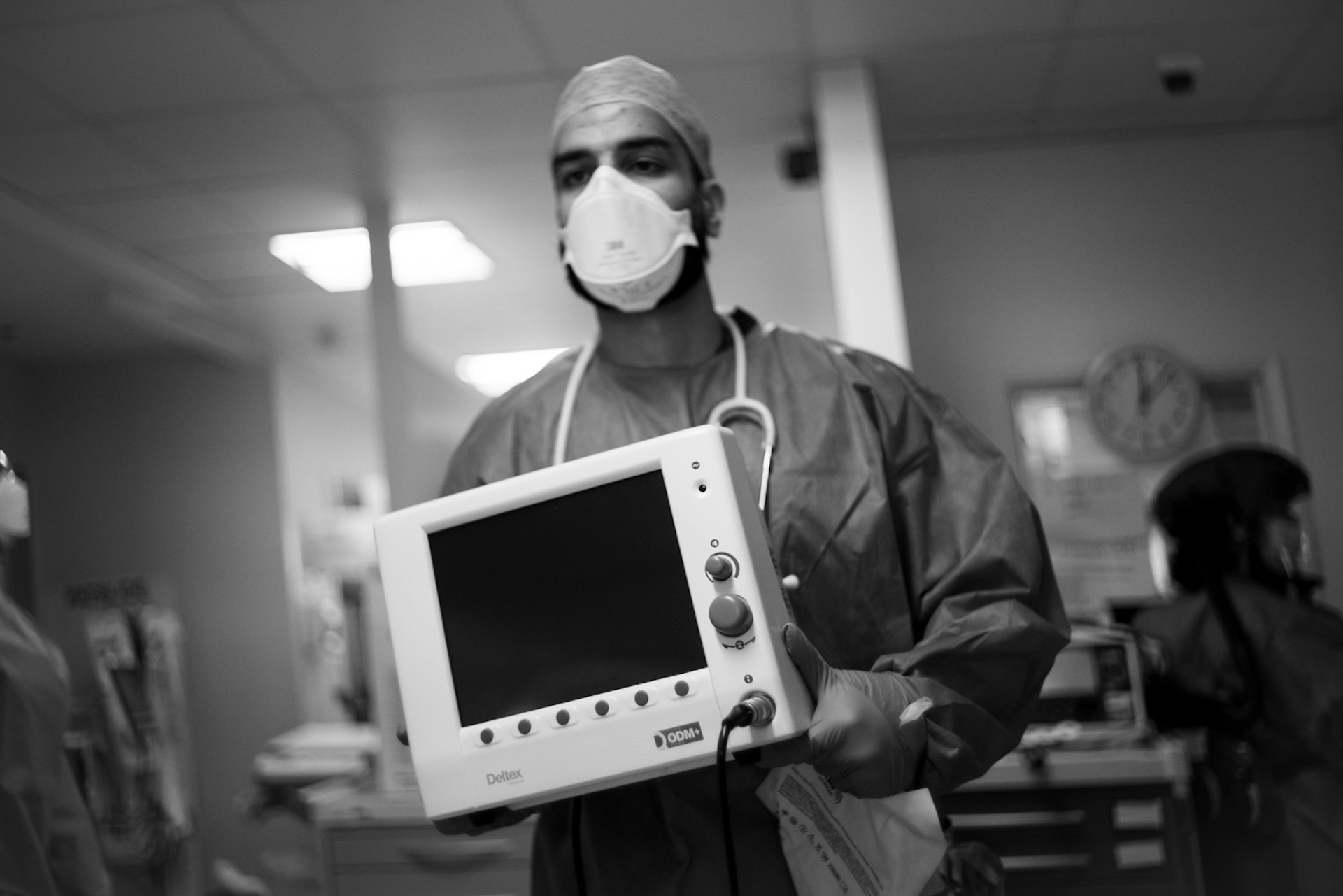
A doctor carries medical equipment in the ICU
Lucy has worked at the hospital in the communications team throughout the pandemic. Every morning a member of the team attends the ‘handover’ with all the other doctors to gauge a complete clinical picture for each patient over the previous 24 hours. They then call the families of those in the ward to give them an update.
“We call up the relatives in the morning and give them a picture as to what’s been happening,” Lucy explains. “Whether they’ve been improving, declining, what the overall prognosis is, what we’re worried about, what we’re not worried about. Then once we’ve done that we go on to the wards and facilitate any FaceTimes and phone calls with patients who are able to do so.”
“It’s strange and surreal but the calls are incredibly rewarding for not only the patients but for the relatives as well. We’re in such a unique and difficult situation with families not being able to come in but providing some kind of contact and communication I think is therapeutic for both sides.”

Dr. Susan Jain on a Ward Round in the ICU
In this sense, Lucy and the team become embedded within the lives of the patients and their families. They see the rise and fall of the disease and become invested in the minutiae of patients’ daily lives. “I think that’s the most challenging aspect for me,” she says. “Because I know what that person is like, it really puts into perspective that human aspect. Sometimes I fear that behind the tubes and wires the sense of who that person actually is is lost. I get the opportunity to see it all, good or bad, and it can be incredibly hard. There’s a gentleman on the ward who is going to be put under anesthesia later and…” She trails off, before motioning with her hands to indicate she’s not sure whether he’ll survive.
The relentlessness of the pandemic is taking its toll on staff. Many, like Lucy, seem shaken by what they saw during the second wave of the pandemic which hit at the end of last year. “At the start of this wave it was incredibly difficult because [with] every single patient who was admitted onto the ward, you would just think about the worst possible outcome and it’s hard to maintain morale when it comes to that,” says Lucy. “The team is working so hard and I don’t think I’d be able to do this job without my colleagues.”
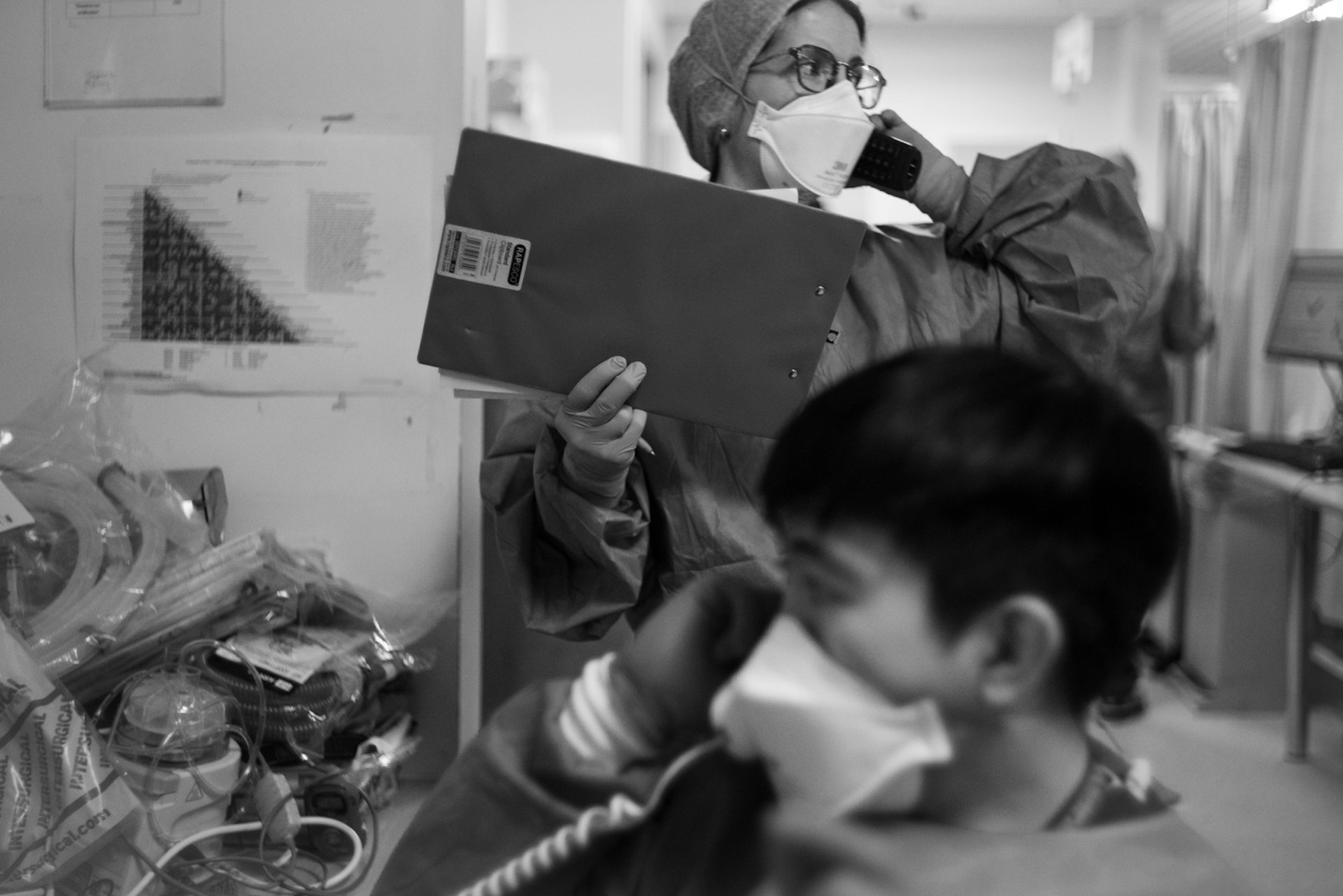
Medical workers answer phones from other staff members outside the ICU ward
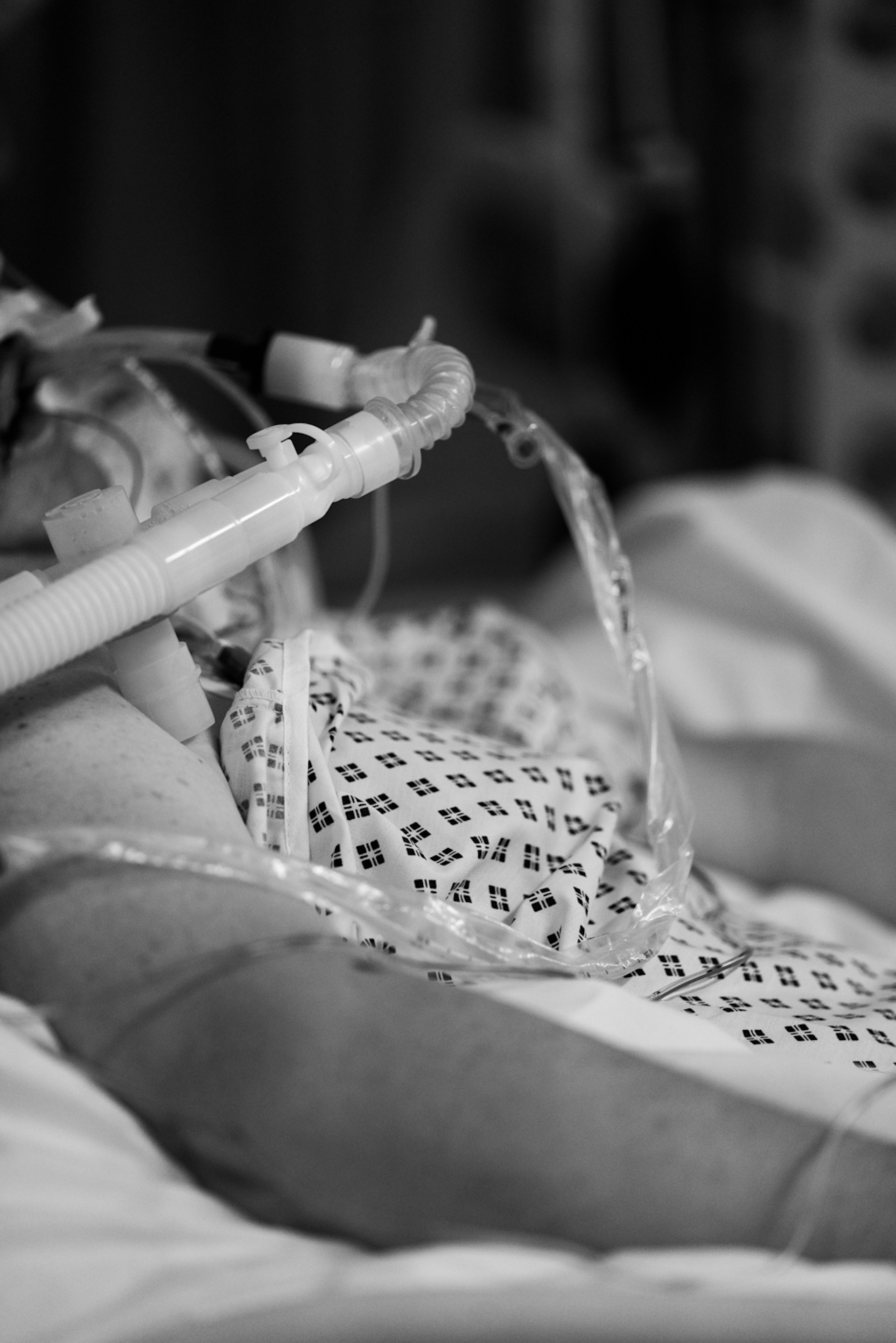
An intubated patient who has tested positive
A couple of beds down, Susan has been joined by a junior doctor to finish her rounds. In place of a mask, he has a thin plastic helmet on, inflated by a small fan which is fed air by a tube which runs down his back. They run through the prognosis for a patient they describe as “stably awful” as nurses make their way around them, checking medications and seeing to those in the beds.
At the end of rounds, all of the PPE has to be removed and thrown into a medical waste bin, followed by a thorough washing of hands – twice. After the heavy-duty masks are removed, you find yourself involuntarily stretching out your jaw and massaging the deep indentations on your face that are drawn into it after just a few hours of wearing them. Scrubs are then disposed of for cleaning in the tiny changing room wedged between the wards.
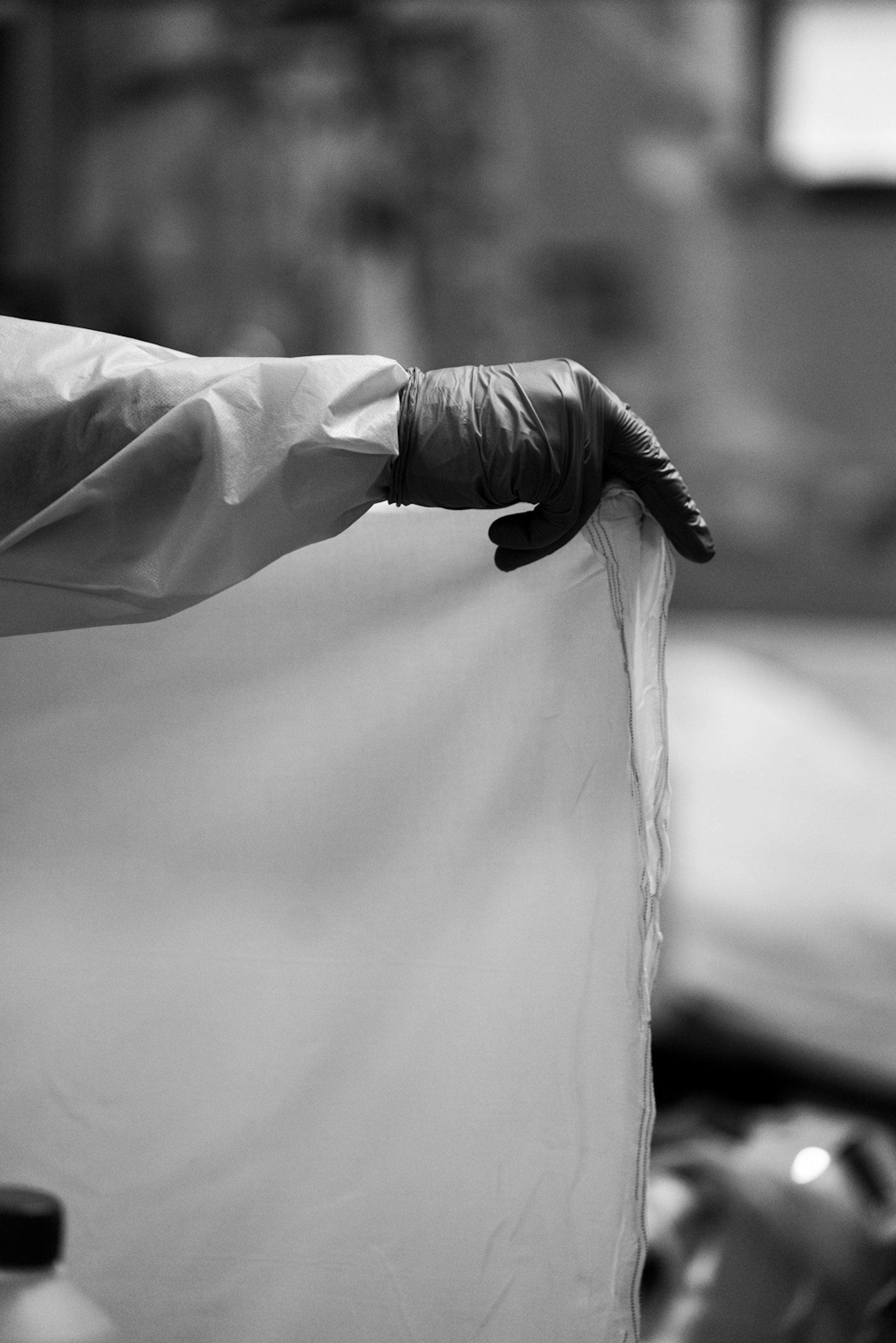
A medical professional preparing a bed for a new patient who is due to be admitted
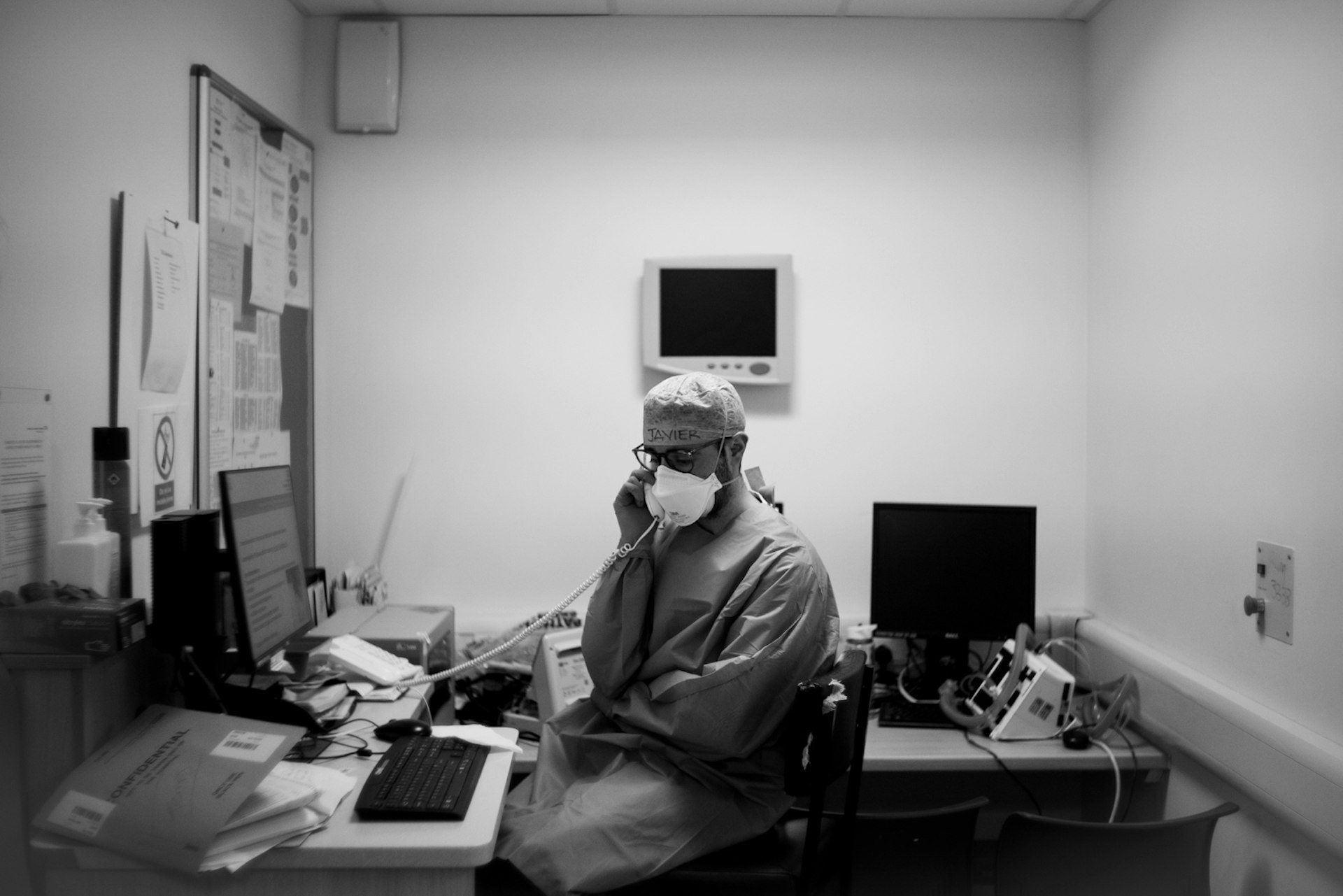
Medical professional Javier on the phone to staff members outside the ICU
In the neighbouring staff room, the atmosphere is distinctly different as those on lunch laugh and joke with one another. Susan stands talking to another doctor, before asking our photographer for a photo together, “just for them”. The heavy-duty masks needed for the ICU and Covid wards are replaced on their faces by thinner paper masks – the kind you’d wear into a shop. Surrounded on all fronts by the seemingly unending horror of the pandemic, this little enclave provides the smallest amount of relief. It is the closest thing to normality one might find in the hospital.
But through the smiles and the laughter, the strain and the stress of the last year is clear to see. “I love my job and I love my team and there’s nowhere else I would rather be,” Susan says. ‘I want to be here, I’ve always wanted to be here but I would say that I’m feeling the exhaustion of it.”
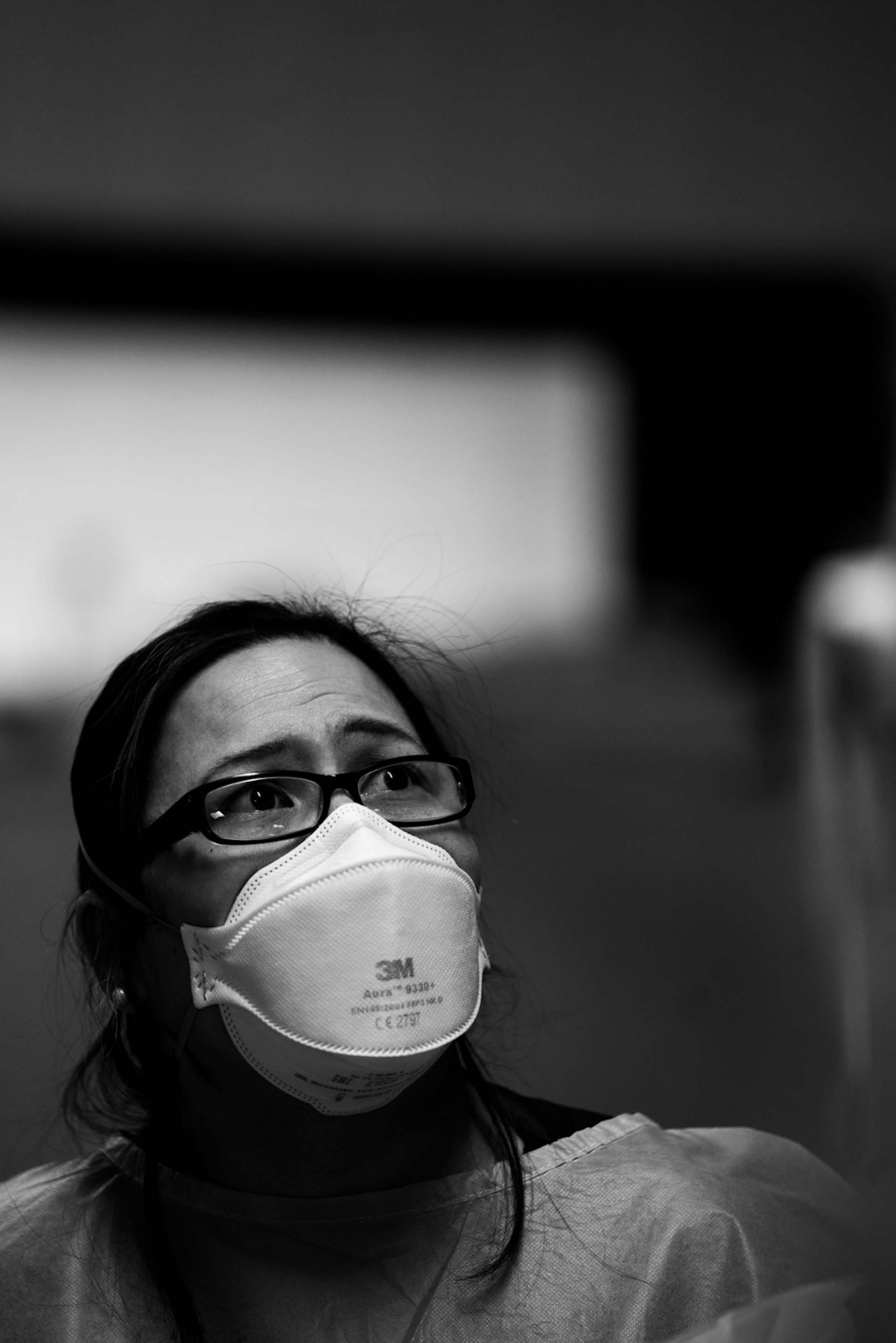
Medical workers analyse patient data inside Covid ward

A medical professional washes her hands when leaving the ICU
“In my days off, I’ve been trying to do things to relax, spend time with my children, go for walks, watch films, do some cooking. But if I do a stint of shifts it takes me two days to feel normal again. I constantly think about the patients that I’ve looked after and I wonder what’s happening to them and it’s almost a sense of needing to be back in it. There’s a sense of helplessness when you’re not there, and when you’re there as well.”
“The sheer numbers of people dying, and the fact that relatives can’t see their loved ones – the fact they can’t come and visit at any time apart from if their loved one is dying – is hard to see. I think people will need to have counselling and time off. In the longer term, people at the end of their careers might decide to leave earlier. I feel like having done the last year in ICU is like having done 5 years. Accelerated burnout is probably the best way to put it.”
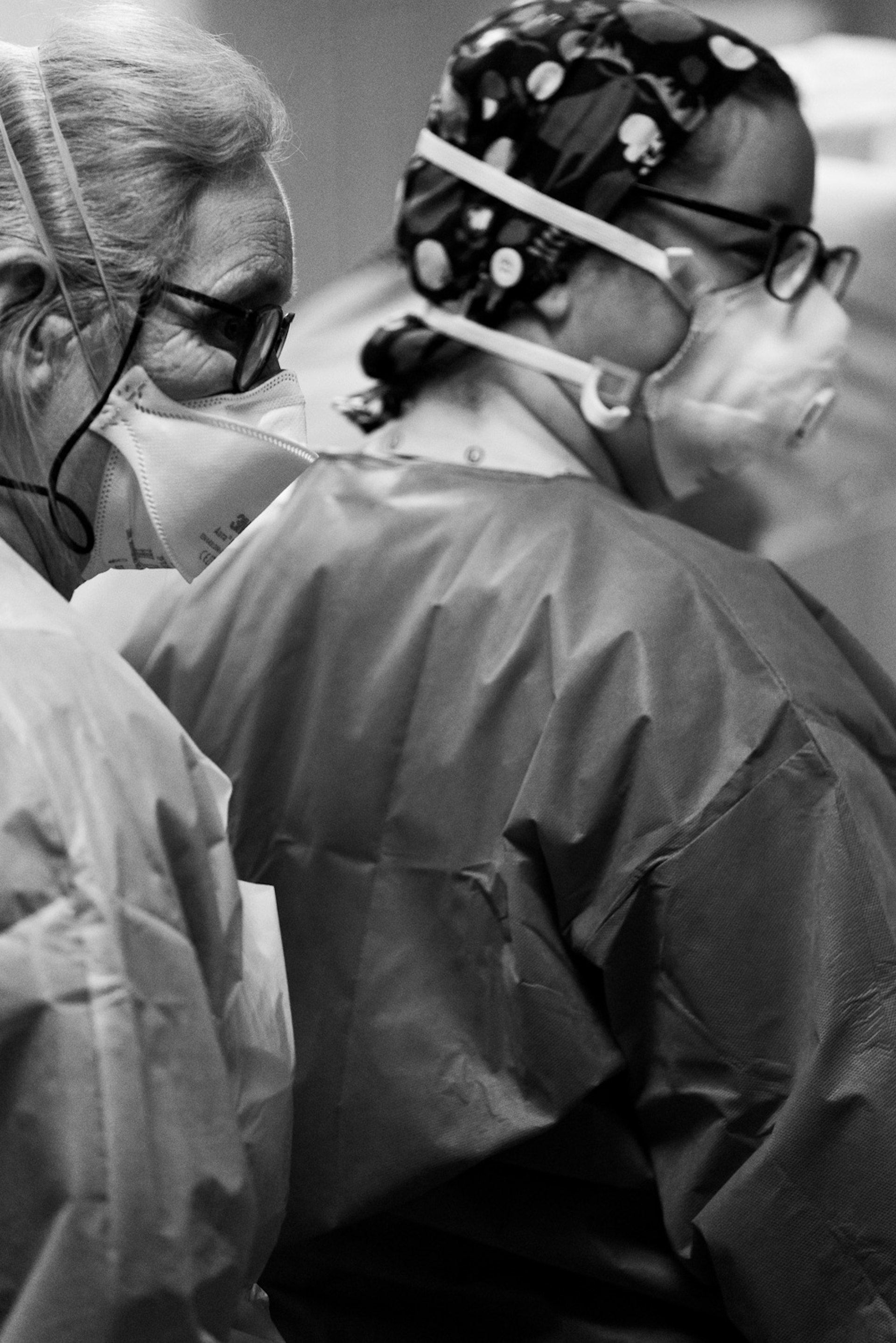
Medical professionals at a patient’s bedside
Susan smiles as we leave, thanking us for coming, before rushing to grab some food ahead of going back onto the ward for the final part of her second 12-hour stint in as many days. Later this week, she’ll do a 24-hour shift. Leaving the hospital by the main entrance, you catch sight of a number of banners hanging from the fence of the estate opposite. ‘This is going to hurt but we couldn’t do it without you. All the workers at Homerton Hospital, thank you’ reads one. On another pastel blue banner the words, ‘Thanks NHS workers, you looked after us now we will look after you’ have been sewn on.
They’re heartwarming and affecting, and you can’t help but think about how Susan and her colleagues must feel, seeing them everyday as they walk back into the unspeakable horror of the pandemic. As we approach the anniversary of the first reported cases in Hackney, with the vaccination programme continuing at speed, the carnage and the indelible emotional toll it’s taking on each and every one of the staff in the hospital looks set to last long into a post-Covid world, whatever that looks like.
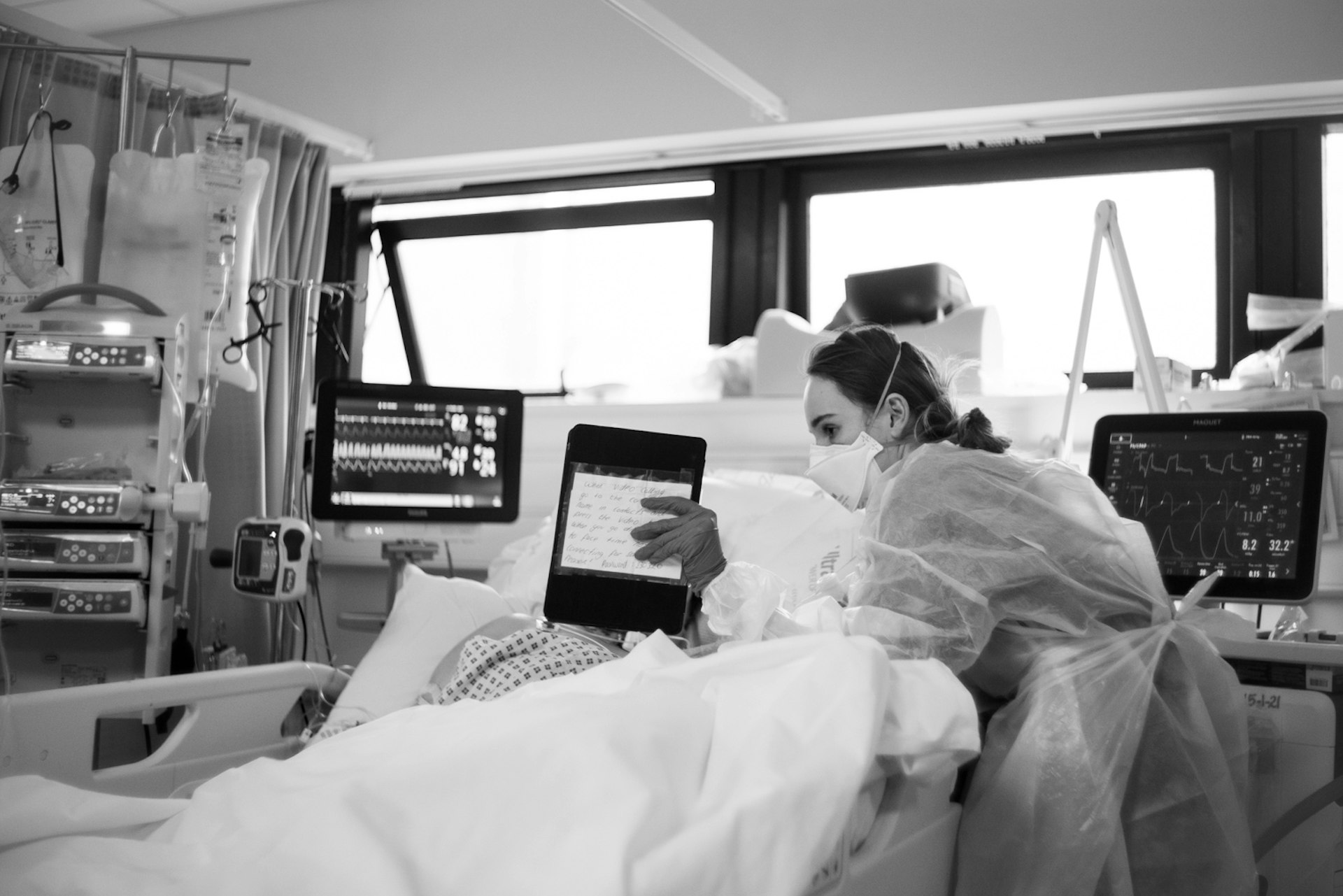
Lulu, a medical worker, holds an iPad to a patient’s face so that they can communicate with their family
Ben Smoke is Huck’s Politics Editor. Follow him on Twitter.
Enjoyed this article? Like Huck on Facebook or follow us on Twitter.
